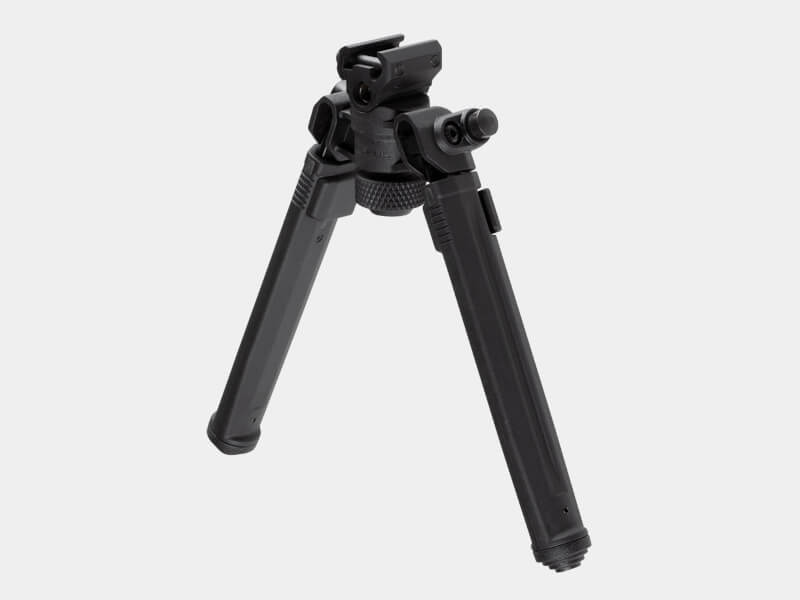Review: Magpul Bipod for Picatinny Rail
February 29th, 2024
6 minute read
Gun owners have a number of choices to make when they head to the range: what gun to shoot, what ammo to bring, what’s the target … the list goes on and on. Regardless of the goal, when it comes to rifles you need some way to stabilize the gun. This can be purely positional using only your body, supported by a sling, a bag or with a bipod.
Why a Bipod?
Bipods are fantastic tools for any rifle shooter. They mount directly to the rifle, eliminating the need to carry a bag or other equipment. This means that even if you choose not to use a bipod, you have the ability to at any time. This is important in uncertain circumstances.
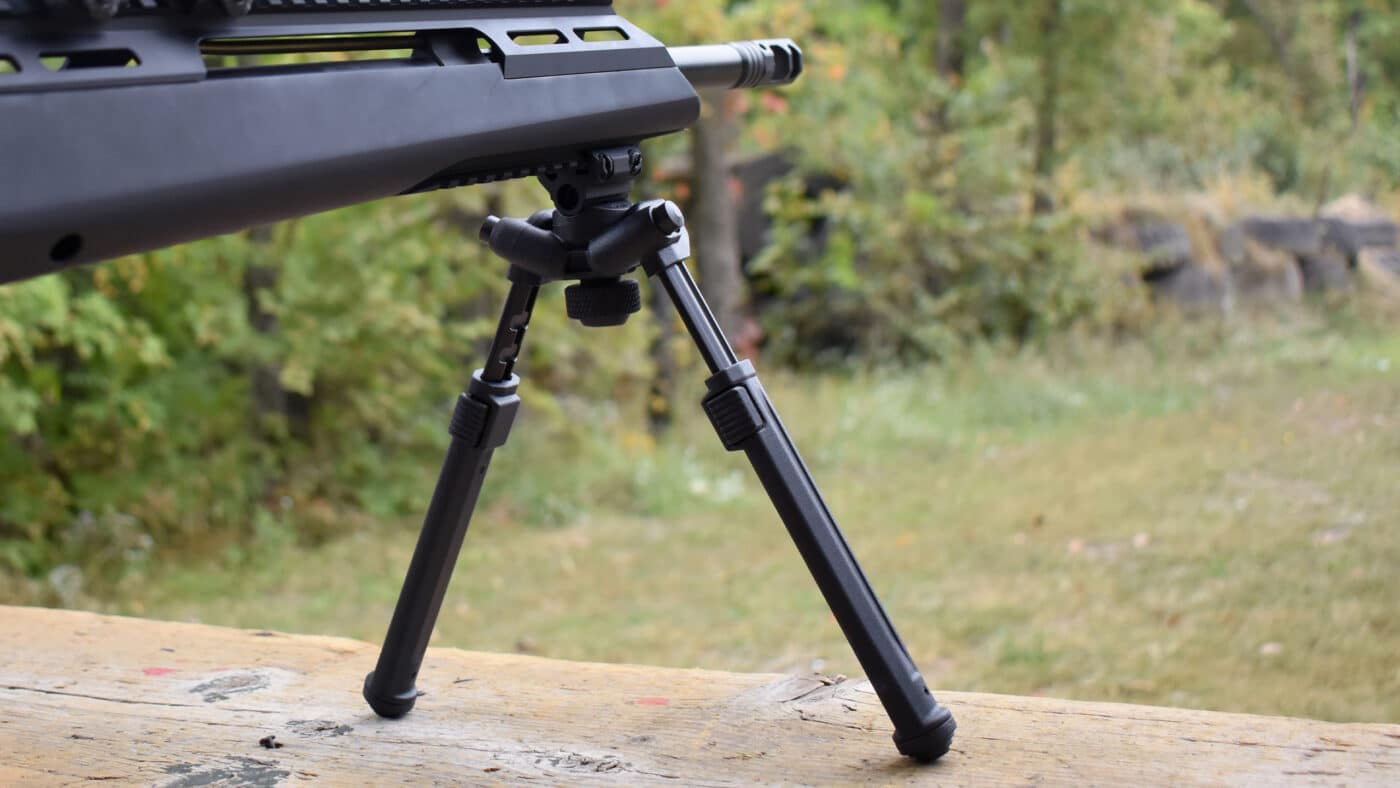
While bipods are common in disciplines like F-Class and PRS, each use case requires something different. F-Class shooters shoot from one position — prone — at a fixed distance. Their bipod needs to stay in place, so it does not matter if it is heavy or cumbersome to carry. Precision rifle shooters need something in between. They need to be able to build stable positions off various obstacles across different types of terrain.
Hunters also have a use for bipods, or some variation thereof. I’ve long used shooting sticks or braced my rifle on the safety bar of a treestand. If I were pursuing game at a farther distance or across fields rather than in dense forests, a bipod would be a natural choice. Predator hunting is one of these applications.
What Kind?
Not all bipods are created equal. They can range in cost from $20 to nearly $1,000 or beyond. This is an incredibly wide range, and all have different features and capabilities. Some are stronger than others. Some have more adjustability. Some are faster to deploy and fold for easy carry.
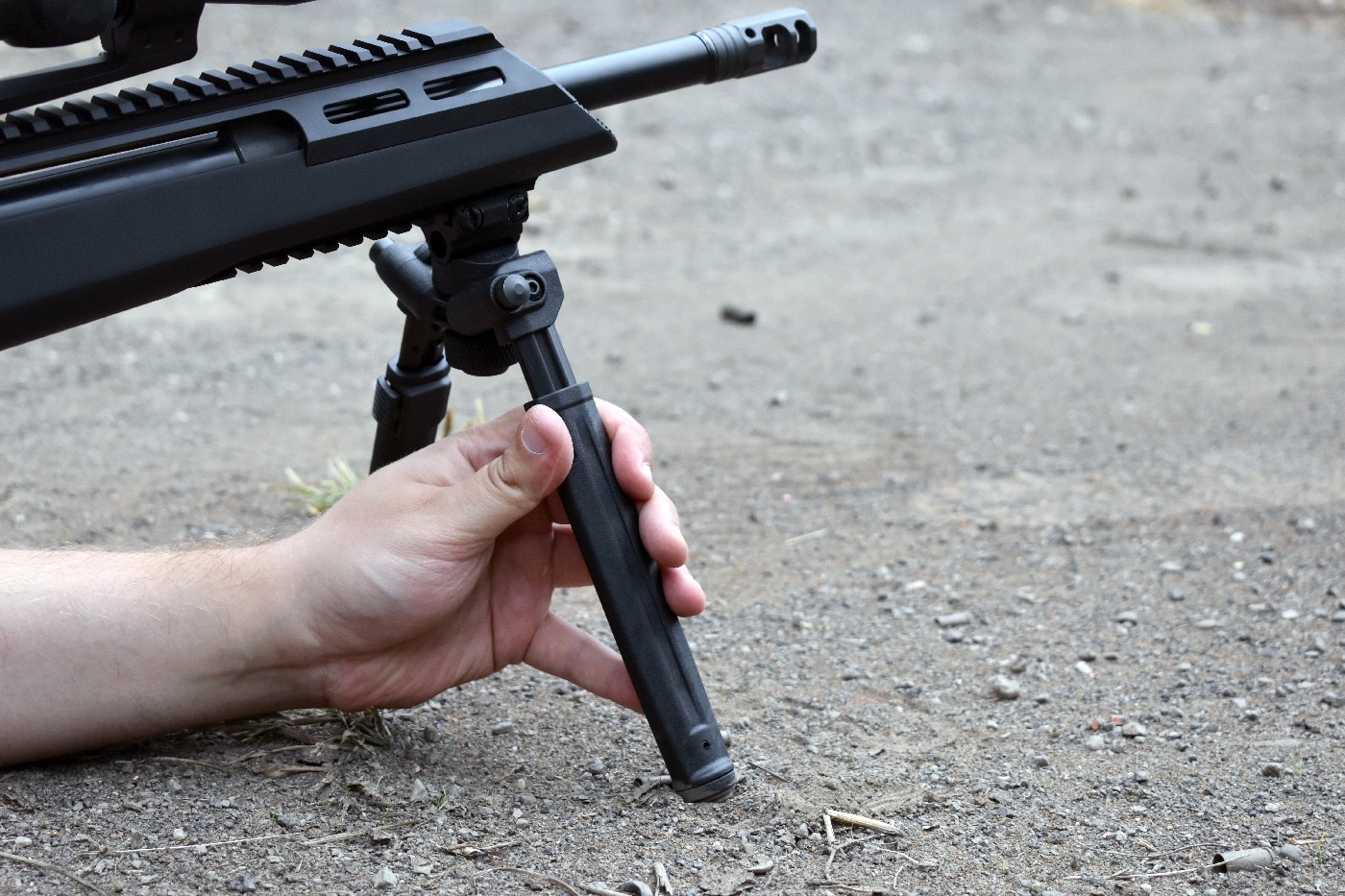
Above all, a bipod needs to stay tight on the gun and serve as a sturdy platform. A bipod that wobbles or falls apart will not help you, and depending on what you are using it for the result may not just be a missed x-ring.
Weight is also another major differentiator between bipods and applications. Hunters and competition shooters generally want lighter bipods. These are lighter to carry, especially over long distances.
I’ve had experience with several bipods — a small Centra bipod for my Palma rifle, an Atlas bipod, an Accu-Tac bipod, and the Magpul Bipod. All have very different applications. My Centra bipod has two small non-adjustable legs with two rubber feet at the bottom and is more of a stand than a bipod, keeping the gun upright between strings of fire.
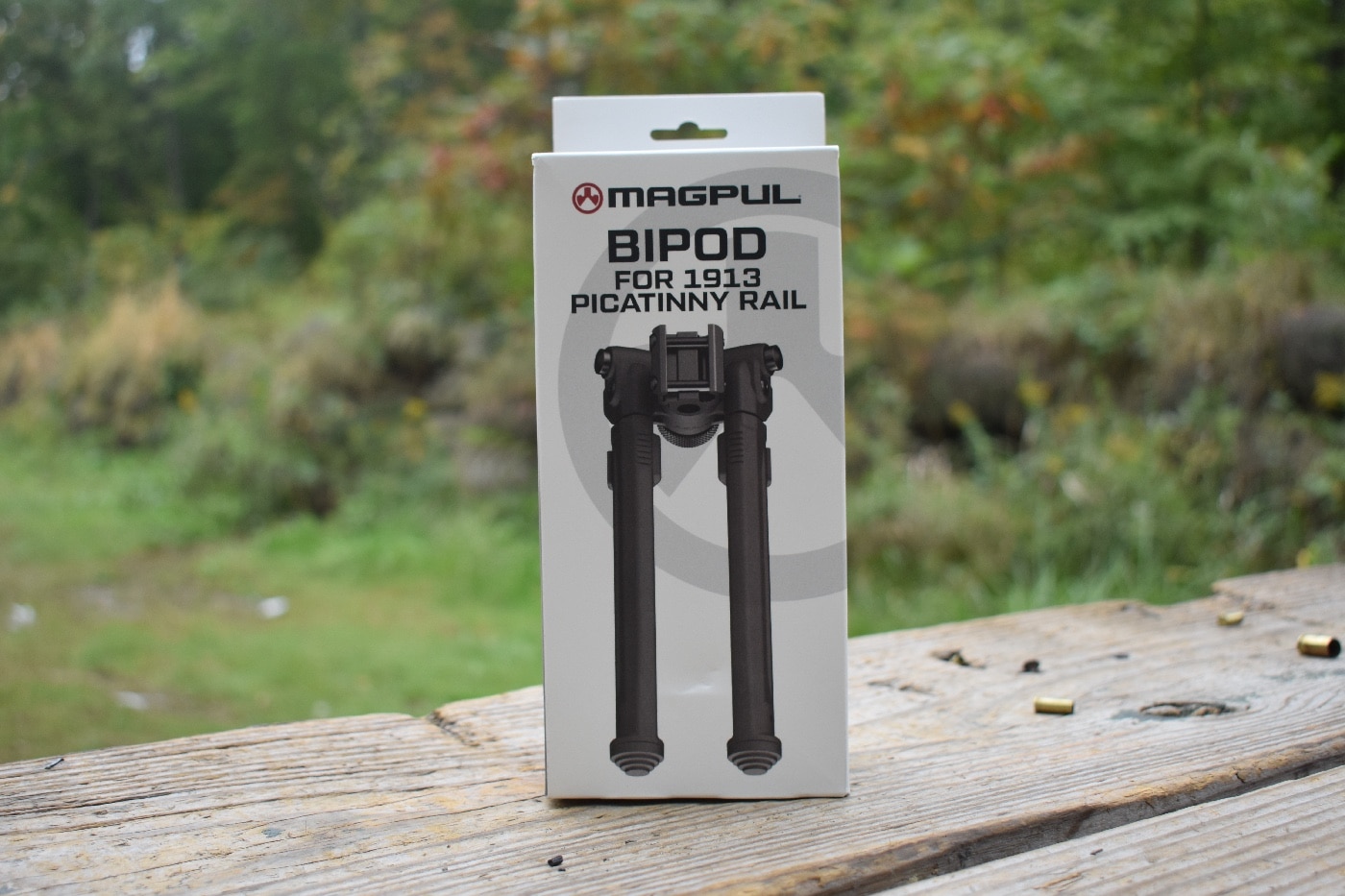
Pulling on the legs of the Atlas bipod lengthen the unit. There are several positions the legs can be angled at, changing the height of the bipod. Accu-Tac bipods are quickly recognizable by their unique shape and robustness. These bipods are sturdy, but heavy. You can adjust the angle by pulling on the leg and physically moving it into the desired notch. Pulling down on the foot lengthens the bipod. Levers on the sides of each collapse the bipod.
The Magpul Option
Magpul’s bipod is particularly attractive both due to its affordability and availability — you can find it at most sporting goods stores. My test unit had a 1913 rail, though Magpul also offers an M-Lok model.
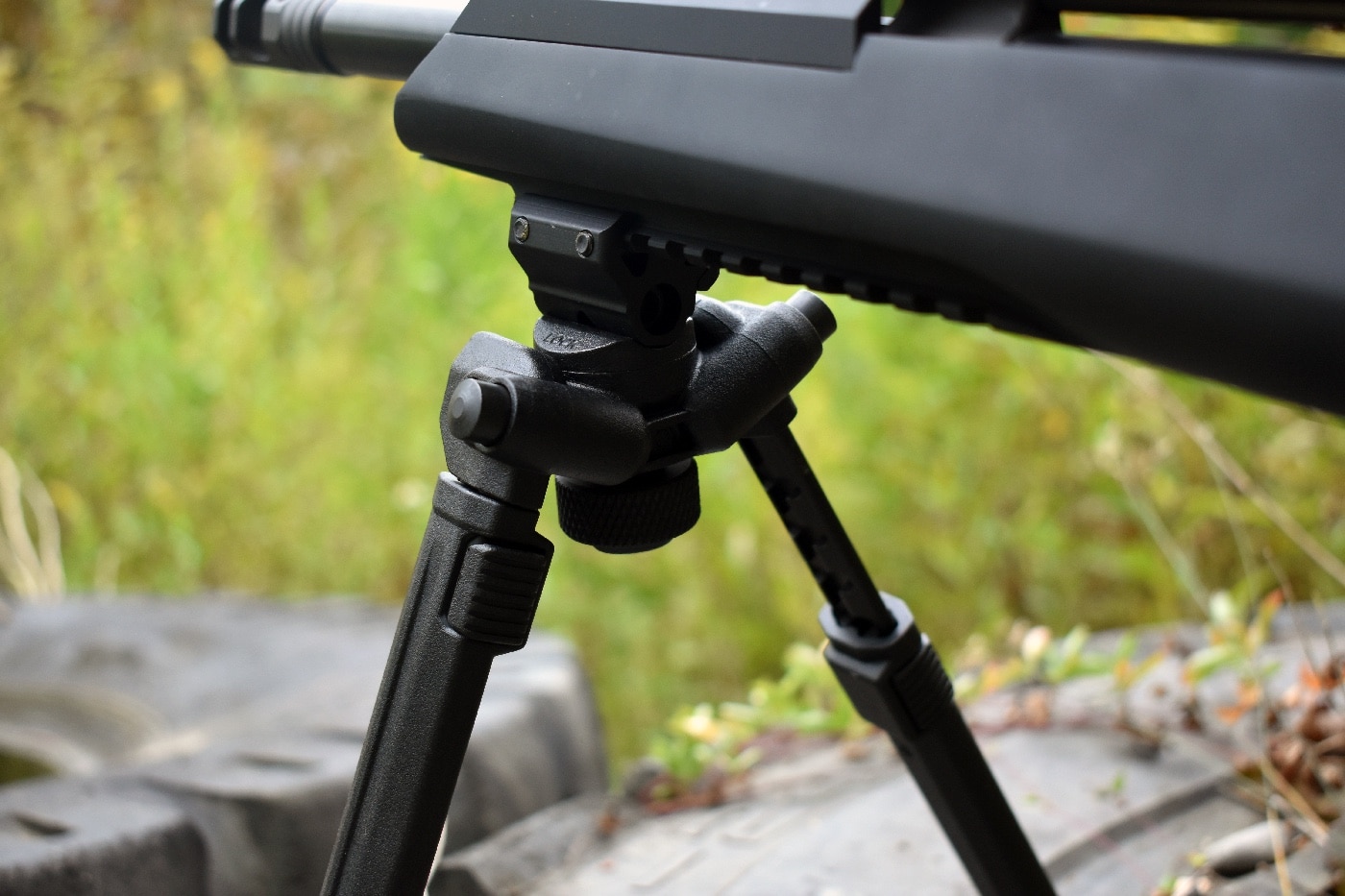
I mounted this bipod to the Picatinny rail on the bottom of the forend of one of my rifles. It doesn’t have a quick detach system, so it’s important to bring along a small screwdriver (not included with the bipod) to properly mount it. Personally, this is a bipod that I would opt to leave on my desired rifle rather than move between guns. Frankly, with a price of around just $100, it’s affordable enough to put one on several guns and leave.
At 11 ounces, this 6061 T-6 aluminum and polymer bipod is incredibly lightweight, but this doesn’t take away from its strength. The rifle/optic combination came in at approximately 10 pounds and I had zero issues putting some weight and pressure on the bipod legs.
Adjustments are relatively limited — legs up or legs down. You cannot adjust the angle of the legs but you can easily adjust the height by pressing a button located on the rear of the legs. (Ensure when you mount the bipod you do so with these buttons facing you so you can more easily manipulate the bipod while behind the rifle.)
The spring-tensioned legs are adjustable from 6.4” to 10.4.” They can also fold up flat against the rifle. Pressing and holding the button on the rear of the leg allows you to choose your desired height. Seven small detents run the length of each leg in half-inch increments, allowing you to match the heights on either side and ensuring a secure fit.
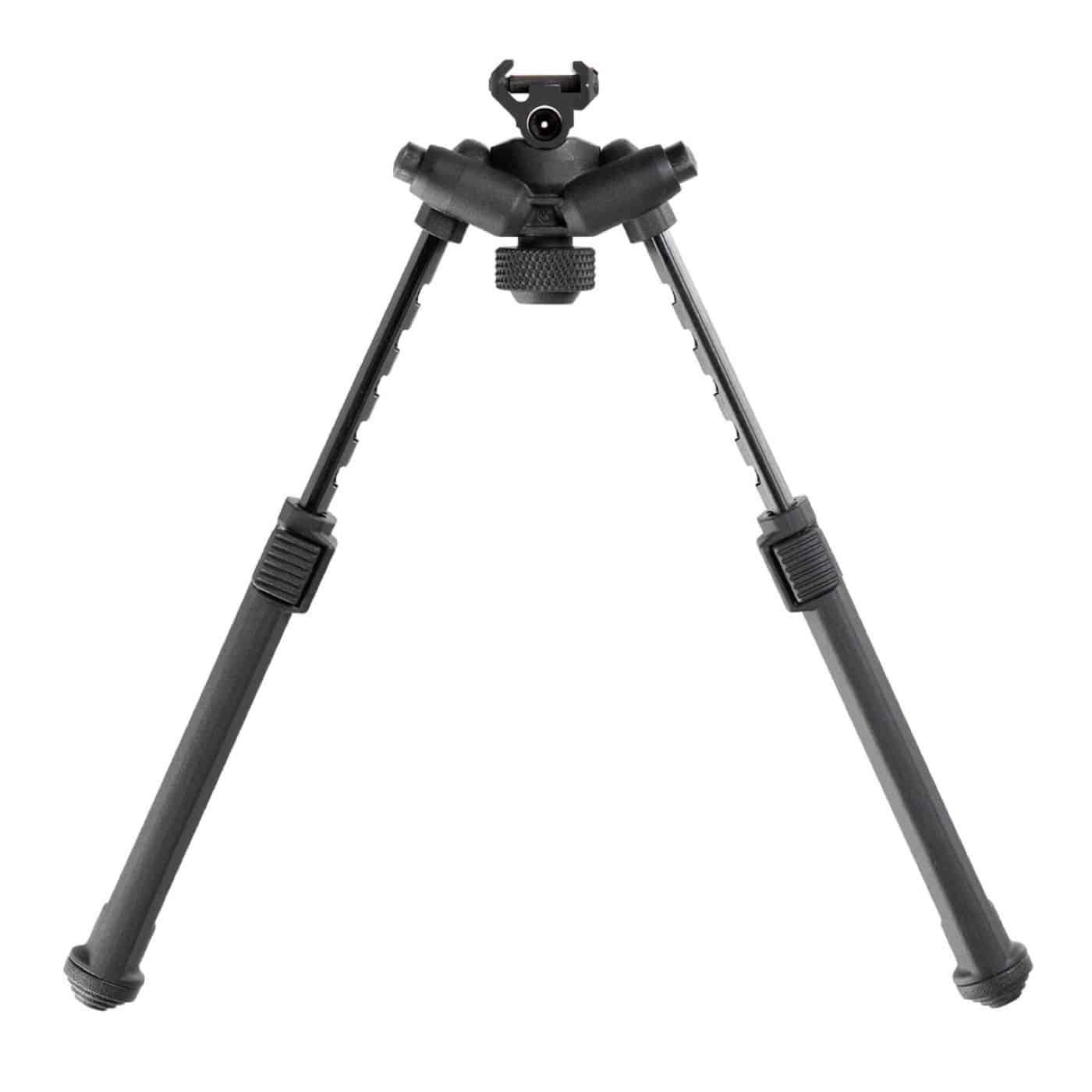
Much of the beauty of this bipod is that each leg is independently adjustable. A knurled locking knob between the legs allows the user 50 degrees of total tilt and 40 degrees of pan, making it easy to engage multiple targets with the same height setting.
Hands-On
I tested this bipod in several different shooting scenarios and had a friend do the same. We shot it off a bench, from the prone position in dirt and off tires. We tried several different bipod heights off the bench. It provided a stable shooting position, allowing me to comfortably stand and fire the rifle.
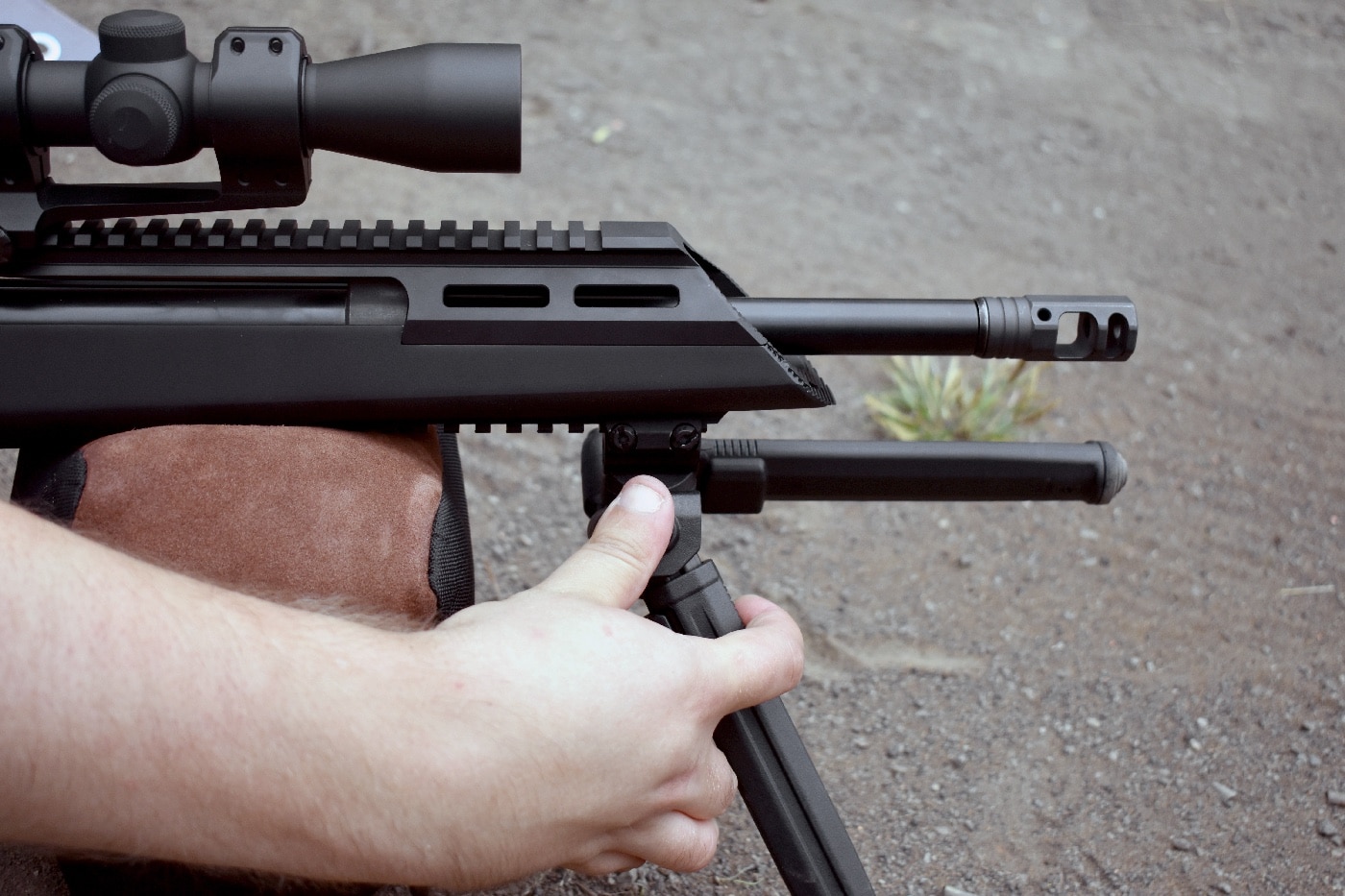
The ability to tilt the bipod made it easy to move my point of aim up and down while panning provided good movement left to right. How much I turned the knob determined how much tension was applied and thus how much movement was possible. It’s also important to note that this bipod can lock pan at 0 degrees while maintaining full tilt abilities.
This bipod is very compact and folds to 2.3” deep and 3.3” wide against the barrel. It didn’t rattle or shake when moving with the rifle, open or folded, and its sleek design makes it less likely to catch. It was actually easy to forget it was there. We folded the legs and rested the rifle off a bag. The bipod didn’t interfere at all and the rear of it actually served as a reference point to ensure the rifle was in the same place every time.
Though scratching the bag wasn’t a concern, Magpul included a soft rubber bipod locking knob cap to prevent surface marring if I opted to shoot off the bipod from the folded position. This is helpful if you need to quickly take a shot without having time to deploy the legs, and offers some traction.
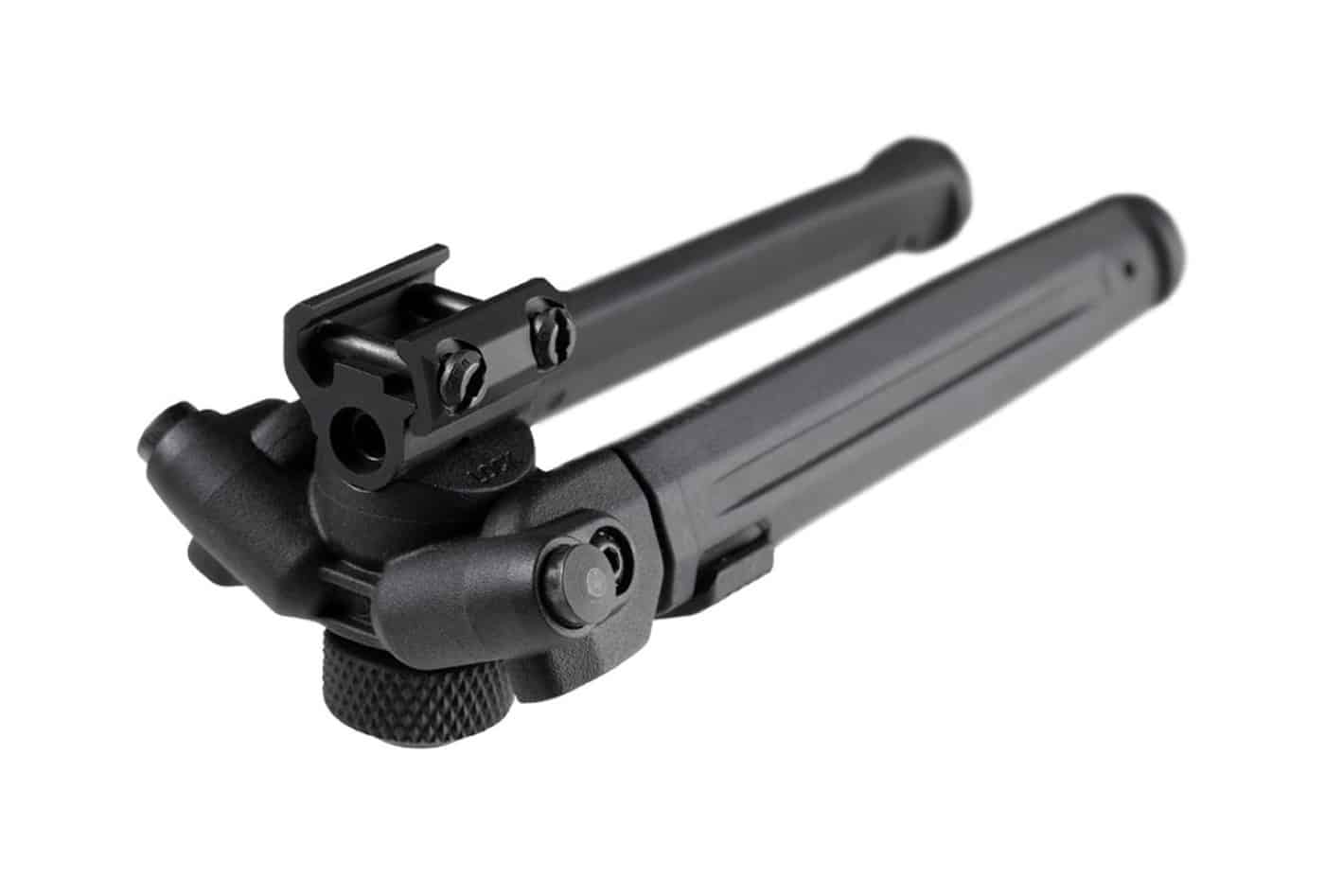
The 1913 bipod has soft rubber feet. These gripped well on the bench and tire, but spiked feet could have done better in the loose dirt. A single roll pin allows you to replace or swap the bipod feet. This bipod is compatible with most Atlas pattern bipod replaceable feet, except for Atlas 5-H style.
I was most impressed with this bipod’s performance off an uneven tire. Being able to adjust each leg independently allowed me to create a stable shooting platform a traditional bag or lead sled could not have, with much more portability and less weight.
Conclusion
Overall, I think the Magpul bipod is a good choice for shooters looking for an affordable and stable platform that don’t require extremely precise adjustments. It was especially lightweight, convenient, and handy on both flat and awkward surfaces.
Editor’s Note: Be sure to check out The Armory Life Forum, where you can comment about our daily articles, as well as just talk guns and gear. Click the “Go To Forum Thread” link below to jump in!
Join the Discussion
Featured in this article
Continue Reading
Did you enjoy this article?

 62
62




